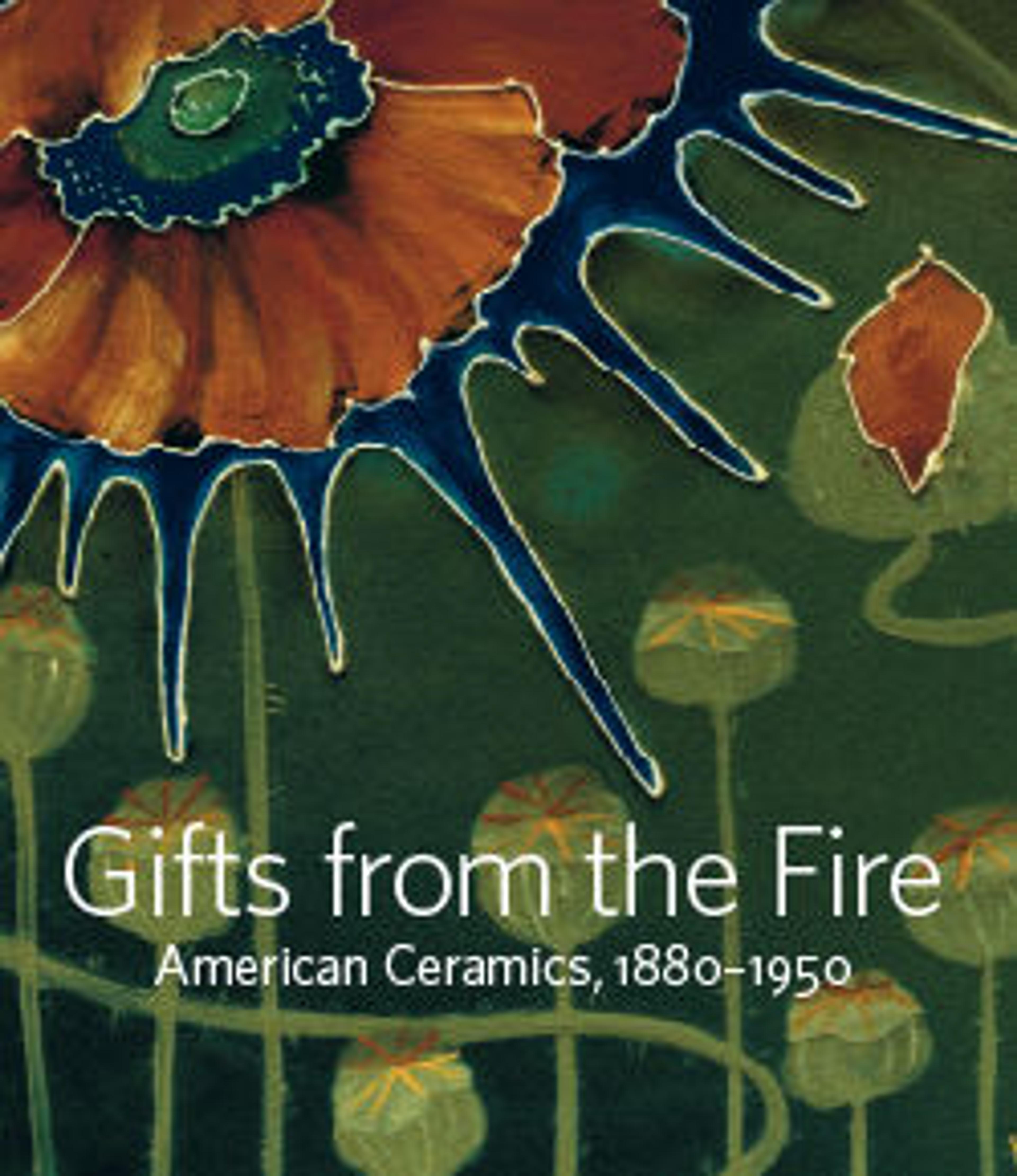Vase
Artus Van Briggle began his career in ceramics at the Rookwood Pottery, but because of respiratory issues, moved to Colorado, where, with his wife Anna Van Briggle, he established his own pottery in Colorado Springs in 1901. The Van Briggles and some other designers produced models from which molds were made, and the vases were then slip-cast in multiple forms. They were particularly noteworthy for their glazes in satiny soft textures in unusual colors, sometimes one or more combine on a single piece. Like many American artists, Artus Van Briggle had traveled to and studied in Paris in the late 1890s and was much influenced by not only the artistic ceramics he saw there, but much of the French art that was on exhibition. Van Briggle’s early work often exhibits the stylistic characteristics of the Art Nouveau, especially in the sinuous curves of the stems on his floral-decorative vases. A vase of this form was exhibited at the Paris Salon of 1903. As seen in this vase, he emphasized the abstracted design of the peacock feather, while also integrating it into the shape of the vase.
Artwork Details
- Title: Vase
- Maker: Artus Van Briggle (American, Felicity, Ohio 1869–1904 Colorado Springs, Colorado)
- Date: 1903
- Geography: Made in Colorado Springs, Colorado, United States
- Culture: American
- Medium: Stoneware
- Dimensions: H. 12 1/2 in.
- Credit Line: Gift of Martin Eidelberg, 2020
- Object Number: 2020.64.175
- Curatorial Department: The American Wing
More Artwork
Research Resources
The Met provides unparalleled resources for research and welcomes an international community of students and scholars. The Met's Open Access API is where creators and researchers can connect to the The Met collection. Open Access data and public domain images are available for unrestricted commercial and noncommercial use without permission or fee.
To request images under copyright and other restrictions, please use this Image Request form.
Feedback
We continue to research and examine historical and cultural context for objects in The Met collection. If you have comments or questions about this object record, please contact us using the form below. The Museum looks forward to receiving your comments.
